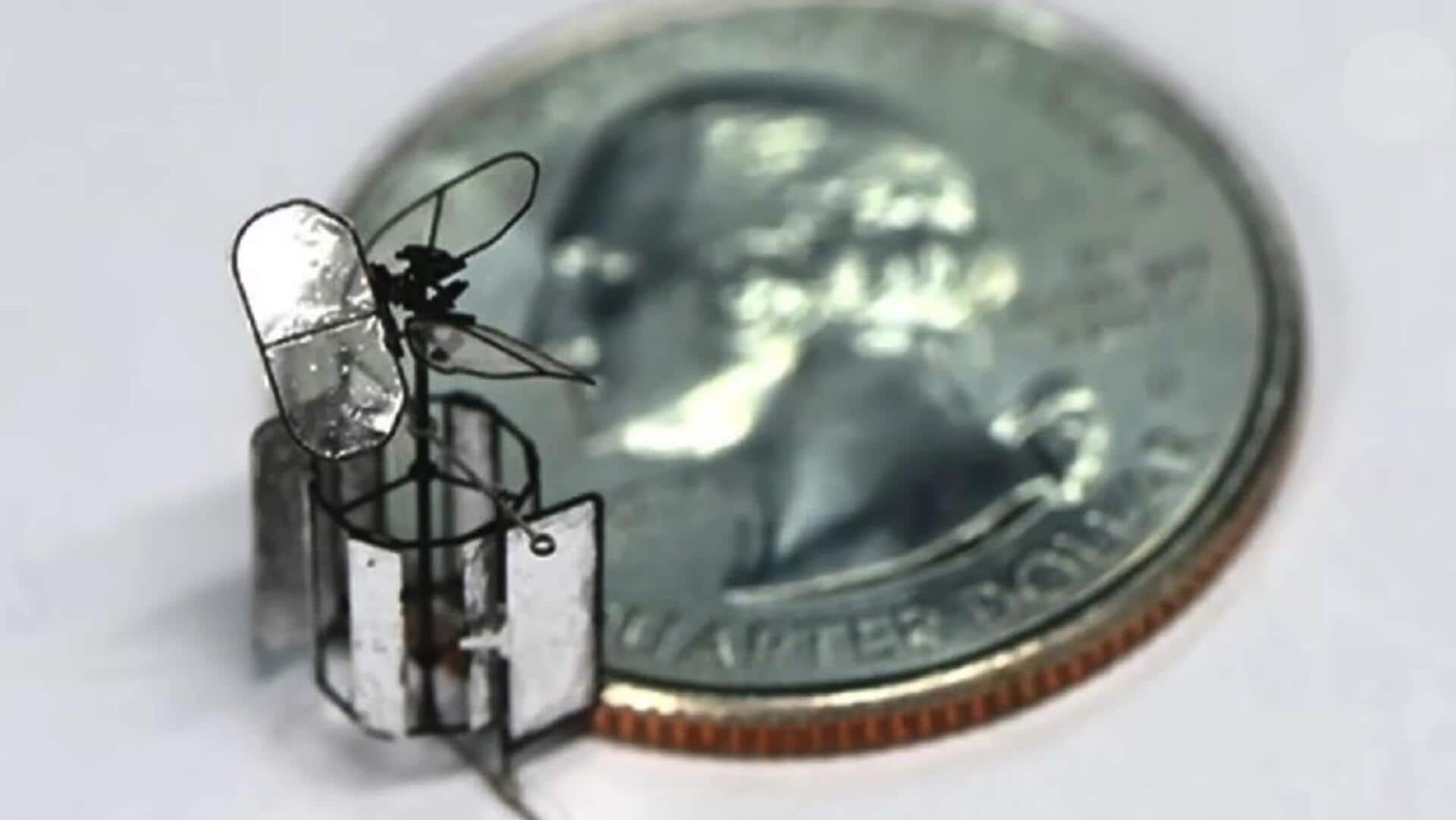
China: Scientists develop 4g solar-powered drone that might fly forever
What's the story
Chinese researchers have made significant strides in drone technology, with the development of a solar-powered model, named CoulombFly. This aerial robot weighs just 4gm and is powered by tiny solar panels. The CoulombFly, as small as a hummingbird, has so far only been tested under natural sunlight conditions for an hour. Despite this limited testing period, the scientists believe their approach could lead to the creation of insect-sized drones, capable of staying airborne indefinitely.
Contents
A look at the specs
According to researcher Mingjing Qi, the scaled-up voltage from CoulombFly's solar panels ranges between 6,000-9,000V. The drone's unique feature is its unusual electrostatic motor that works in conjunction with the solar panels to power a 10-cm rotor. The drone's propulsion system is notably lightweight, with an electric motor weighing just 1.52g that drives a 0.44g top rotor.
Power system
Solar panels and electrostatic motor power the drone
The base of the CoulombFly drone houses two small solar panels, each about (4cm) square. These panels generate around 4.5V under sunlight, which is then fed through a 12-stage voltage multiplier and transformer to step up the voltage closer to 9,000V. The rotor of the drone is a series of 64 thinner vertical tabs, behind the stator plates of an electrostatic motor.
Future prospects
Durability and future potential
The researchers conducted a durability test on the CoulombFly for one hour, during which the drone remained in sustained flight. They stated, "This experiment demonstrates electrostatic motors' excellent stability and durability, providing a foundation for future development of long-endurance Micro Air Vehicles (MAVs)." The team now aims to increase the drone's payload capacity to accommodate small sensors and controllers.
Challenges ahead
Overcoming limitations for 24-hour operations
The researchers acknowledge limitations with sunlight availability and humidity. They suggest, "In the future, the vehicle can be powered by a combination of rechargeable batteries and solar cells, potentially enabling 24-hour flying operations." This solution could enhance the drone's environmental adaptability, permitting it to maintain flight in low-light-intensity or even no-light conditions.